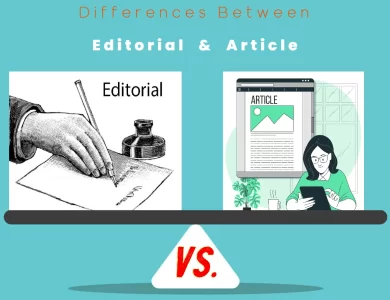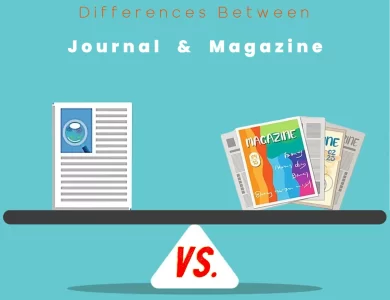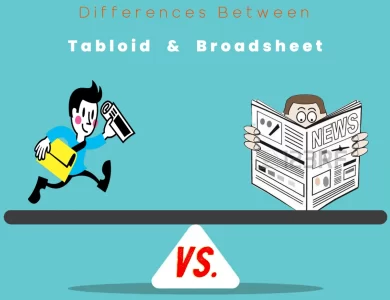Print Media
-

Imprint Company vs Publishing Company
In the dynamic world of book publishing, two distinct avenues await authors seeking to share their literary creations with the world: Publishing Companies and Imprint Companies. Each offers a unique approach to bringing books to readers, and the choice between them can significantly impact an author's career and the reception of their work. Publishing Companies, often referred to as traditional publishers, are comprehensive entities that cover a wide spectrum of genres and audiences. These publishing giants handle every facet of book production, from editing and cover design to marketing and distribution. If your book appeals to a broad readership and spans various genres, a Publishing Company might be the ideal partner for your literary journey. They possess the resources and expertise needed to market your work effectively to a wide audience. Additionally, being associated with a well-known publishing company can enhance your authorial brand and credibility. On the other hand, Imprint Companies are specialized divisions or subsidiaries within larger publishing houses. They focus on particular niches, genres, or themes, offering authors more tailored editorial guidance and marketing strategies. If your book caters to a niche-specific audience or aligns closely with a specialized genre, an Imprint Company could be the perfect fit. Imprints provide a more personalized approach, allowing authors greater influence over creative and marketing decisions within the niche. While they may not have the same level of brand recognition as their parent publishers, they excel at building niche reputations and attracting dedicated readers.
-

Glamour Photos vs Editorial
Delve into the captivating realm of photography as we unveil the unique disparities between editorial and glamour photos. While both styles wield their creative magic, they paint vastly different strokes on the canvas of visual artistry. Editorial photography, a narrative-driven genre, seeks to tell stories, evoke emotions, and convey messages through candid moments and authentic expressions. Collaborating with stylists, it captures relatable scenes that spark discussions. In contrast, glamour photography revels in aesthetics, beauty, and allure. Meticulous styling, controlled expressions, and dramatic lighting define this style, celebrating subjects' confidence and charm. Whether you're drawn to the intellectual engagement of editorial or the aesthetic magnetism of glamour, understanding their nuances empowers you to navigate your photography journey with purpose. From capturing real-life scenarios to showcasing elegance, each style lends its own unique voice to the world of visual storytelling. Join us on this journey of exploration and appreciation, where the lens reveals not just images, but entire narratives and moments frozen in time.
-

Article vs Editorial
Embark on a journey through the literary realm as we unravel the captivating differences between editorials and articles. These two forms of writing, though often interwoven, possess distinct traits that shape their essence. While editorials command authority and advocate opinions on behalf of publications, articles offer a versatile canvas for personal perspectives and storytelling. The tone of editorials resonates with persuasion, steering readers with conviction, while articles adapt to various tones, from the formal to the conversational. Authorship plays a pivotal role: editorials are authored by collective editorial teams, reflecting a publication's standpoint, while articles bear the signature of individuals, allowing for unique insights to shine. Whether you're drawn to the assertive cadence of editorials or the flexible flair of articles, understanding their differences adds depth to your writing journey. Join us as we navigate the nuanced landscapes of these two captivating literary forms.
-

Opinion vs Editorial
Delving into the realm of journalistic expression, the differences between editorial and opinion pieces become clear as day. Editorial articles stand as the voice of publications, delivering an informed stance on pressing matters. Authored by editorial boards, these pieces maintain an objective, authoritative tone. Their content involves thorough research, balanced analyses, and a presentation of credible sources. On the flip side, opinion pieces are personal narratives penned by individual writers—think columnists, experts, and contributors. These pieces embrace subjectivity, inviting readers into the writer's unique perspective and emotional landscape. While editorials focus on objective analysis and offer a comprehensive view of issues, opinions weave in personal experiences and evoke emotional connections. Both writing styles play pivotal roles in shaping public discourse, challenging perceptions, and fostering critical thinking. Whether you're seeking well-researched insights or heartfelt connections, the editorial-opinion spectrum has something to offer every reader. If you're eager to delve into the finer details of these fascinating differences, join us on our journey through the blog "Differences Between Editorial vs Opinion," where we unpack the intricacies of these captivating writing styles.
-

Magazine vs Journal
Delving into the world of reading, the differences between journals and magazines unveil a captivating contrast in purpose, content, and readership. Journals stand as scholarly sanctuaries, housing in-depth research, academic studies, and expert analysis. With a formal tone and objective presentation, they cater to academics, researchers, and professionals seeking authoritative insights. On the other end of the literary spectrum, magazines embrace a colorful tapestry of content, ranging from feature articles and stories to eye-catching visuals. The conversational tone and relatable approach of magazines appeal to a broader audience, including enthusiasts, hobbyists, and the general public. While journals prioritize rigorous peer review to ensure credibility, magazines maintain a more open editorial process that values entertainment alongside factual accuracy. Whether you're diving into the depths of scholarly exploration or seeking a leisurely escape into diverse narratives, understanding the unique essence of journals and magazines enriches your reading journey. Explore the detailed exploration of the "Differences Between Journal vs Magazine" and embark on a literary adventure that caters to your curiosity, interests, and thirst for knowledge.
-

Magazine vs Newspaper
Delving into the realms of print media, the differences between newspapers and magazines unfold like chapters in a captivating narrative. Newspapers, the timely messengers of the news world, deliver quick updates on a daily basis. Their pages rustle with the urgency of breaking news, offering readers a swift glance at the pulse of society. On the other hand, magazines embrace a slower cadence, catering to specific interests with in-depth articles and thematic exploration. Their layouts are a canvas for creativity, showcasing immersive visuals and stories that invite readers to linger. While newspapers prioritize objectivity and concise writing, magazines encourage subjective viewpoints and creative narratives. The choice between the two is a matter of personal taste and reading goals. Whether you're drawn to the swift flow of daily events or the immersive depths of thematic content, each has its allure. Step into the world of print and explore the distinctive realms of newspapers and magazines – both valuable companions on your reading journey. Choose between quick updates and immersive exploration, or perhaps indulge in both for a well-rounded reading experience that satisfies your curiosity and captivates your mind.
-

Newspaper vs Online News
In the ever-evolving landscape of information consumption, the choice between online news and newspapers holds immense significance. Online news platforms offer immediacy and convenience, accessible at the touch of a screen. From breaking news to interactive graphics, they cater to the fast-paced lifestyle of the digital age. On the other hand, newspapers provide a tangible, tactile reading experience that carries a nostalgic charm. The ritual of flipping through pages, the scent of ink on paper – it's a classic way to engage with current affairs. Beyond the sensory aspects, the differences extend to interactivity and customization. Online news platforms thrive on comments, sharing, and personalized content, while newspapers offer curated selections by seasoned editors. Credibility also plays a pivotal role; newspapers often boast a history of trusted reporting, while the online realm requires vigilant source evaluation. From distractions to in-depth analysis, each medium has its strengths and drawbacks. So, whether you're scrolling through a news app or savoring the physical pages, understanding these differences empowers you to navigate the news landscape with confidence.
-

Broadsheet vs Tabloid
In the realm of print journalism, tabloid and broadsheet newspapers stand as two distinct formats, each with its own unique characteristics. Tabloids, known for their compact size and engaging content, often cater to readers seeking quick updates on entertainment news and trending stories. With catchy headlines and an informal writing style, tabloids delve into celebrity gossip, human-interest narratives, and pop culture trends. On the other hand, broadsheets boast a larger format, offering comprehensive coverage of serious subjects such as politics, economics, and global affairs. Their formal and authoritative tone lends itself to in-depth analysis and well-researched reporting, appealing to intellectuals and decision-makers who value substance and thought-provoking insights. The differences between these formats extend beyond content and size. Tabloids utilize vibrant images and bold typography to capture attention, while broadsheets focus on supplementary visuals that enhance their detailed articles. Tabloids have mass appeal, targeting a diverse demographic, whereas broadsheets cater to those seeking intellectual engagement and a profound understanding of current events. Ultimately, the choice between tabloid and broadsheet newspapers depends on individual preferences for quick, entertainment-focused updates or in-depth analysis that delves deeper into complex issues.
-

Wall Street Journal vs New York Times
In a world where information is abundant, navigating the right news source can be challenging. The New York Times and Wall Street Journal stand as pillars of journalism, each offering a distinct flavor of reporting. The New York Times, affectionately known as "The Grey Lady," provides comprehensive coverage of international news, politics, arts, and culture, appealing to a diverse readership that includes intellectuals, academics, and cultural enthusiasts. On the other hand, the Wall Street Journal is a stalwart in financial reporting, catering primarily to business professionals, investors, and economists. Its data-driven, concise approach focuses on delivering accurate financial information and actionable insights. Both newspapers possess unique editorial styles – The New York Times opts for nuanced narration and descriptive language, encouraging critical thinking, while the Wall Street Journal maintains a pragmatic, matter-of-fact tone geared towards precise financial understanding. The digital realm also sets them apart: The New York Times offers a multimedia-rich online platform with a visual storytelling emphasis, while the Wall Street Journal provides real-time financial news and functional design. Whether you're a culture enthusiast seeking arts coverage or a business professional in pursuit of market trends, understanding these differences can help you tailor your news consumption to your interests and needs.








